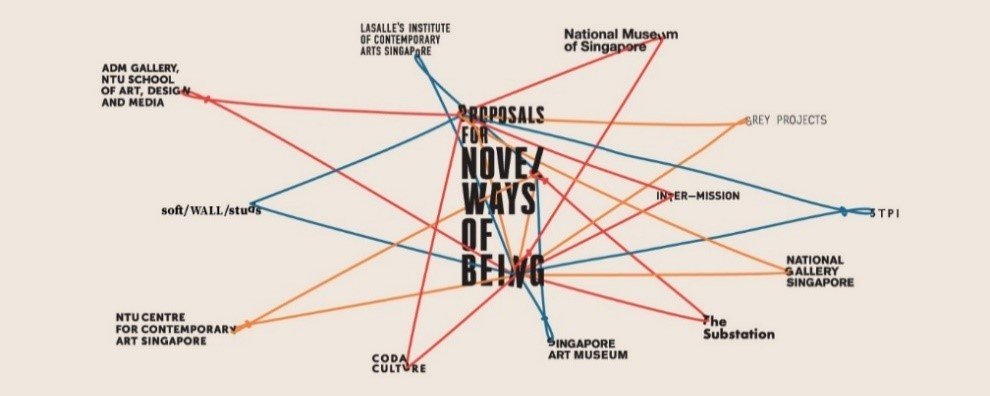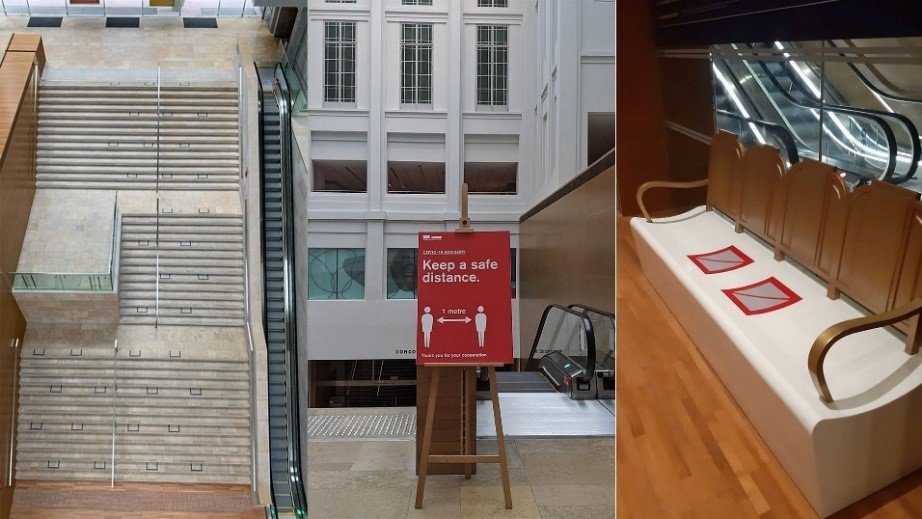"A larger segment of the Gallery’s audience is now local"

In 2020, museums and collections all over the world were deeply affected by the COVID-19 pandemic; consequently, many public-facing institutions were required to take a position on their operations. The Museum Watch Committee saw the extent to which museums played a specific role in the discussions on COVID-related lockdown measures within wider fields such as arts and culture, entertainment, and leisure.
To monitor the roles and positions of institutions internationally, the Museum Watch Committee asked CIMAM members to identify the main arguments used worldwide to keep museums open and operational in these difficult times. It launched this project in November 2020.
This call to action activated contemporary art professionals worldwide, spanning Argentina, Australia, Belgium, India, Italy, Peru, Russia, Singapore, Spain, and the United States. They presented their main arguments to keep their museums open or reopen them soon and shared their experiences from the pandemic.
Find below the example submitted by Eugene Tan, Director, National Gallery Singapore, and Singapore Art Museum, and member of the Board of CIMAM.
The case for reopening of museums in Singapore is a unique one. The Singapore government, while prioritising the health and safety of the population, proceeded with COVID-19 measures and restrictions with the view of getting its economy (and by extension everyday life) operational as soon as possible. Reopening the museum sectors was a part of that plan.
Singapore implemented a lockdown (‘Circuit Breaker’) in early April. Like other countries around the world, this involved home confinement, the closure of ‘non-essential’ businesses, and home-based learning for students. Lockdown measures were meant to ease in early May, but a resurgence of COVID-19 cases saw this extended instead till early in June. Plans were put in place for when these restrictions were eased—the gradual reopening of non-essential businesses, schools, and leisure activities was to be rolled out in phases.
Colleagues from various divisions across the Visual Arts Cluster (consisting of National Gallery Singapore, the Singapore Art Museum, and STPI) were appointed to a Crisis Management Team to coordinate with the authorities and keep abreast of the latest COVID-19 prevention measures while work-from-home was underway, at the same time also planning for the eventual return of both staff and public to museum spaces. When lockdown measures were lifted in June, staff were permitted to return to the office in a split-team arrangement, and only if absolutely essential to operations. This allowed the maintenance and installation of physical exhibitions in preparation for the Gallery’s reopening.
In the interim, the Gallery pivoted online: onsite programmes and tours were digitally re-presented. This includes the Gallery Children’s Festival 2020, artistic programmes in the series ART + LIVE, and bilingual docent-led highlight tours. On-site educational programmes shifted its engagement online through GalleryKids!. Perspectives, the Gallery’s digital magazine, began the series out of isolation: artists respond to covid-19 which features artists’ reflections on the pandemic. In addition, as the world grappled with new ways of being, the visual arts community in Singapore came together to present a series of exhibitions and programmes titled Proposals for Novel Ways of Being. National Gallery Singapore and Singapore Art Museum (SAM) partnered with 10 other local art institutions, independent art spaces and collectives, featuring the works of over 170 artists and cultural workers in physical and digital presentations.

The initiative kicked off in late July, after museums reopened at the end of June. Reopening was attached with necessary conditions: museums could operate at 25% of their capacity, while temperature-taking and contact tracing were made mandatory as still remains the case in every business venue in Singapore. Floor markers were installed to ensure safe distancing, while tours, programmes, and interactive exhibitions were only gradually resumed.

With human interactions tempered by fear and caution, it is imperative that people have a safe space to interact with each other and connect through a shared physical encounter with art. Now, approximately six months from the Gallery’s reopening, new exhibitions have opened to a demographic different than before. Visitorship currently stands at about 60%, with local visitors forming about 60% of that. A larger segment of the Gallery’s audience is now local, a trend likely to continue given restrictions on international travel worldwide.
Just after lockdown measures were lifted in June, Singapore’s national broadsheet The Straits Times released the results of a poll that asked a thousand respondents to rank jobs “most essential” to keep Singapore running, and which thus ‘deserved’ a wage boost. According to 71% of respondents, artists came in dead last. The Gallery’s current visitorship trends hint at a shift in the reception of art in Singapore, and hopefully with this a positive shift in the role of art and culture in Singapore.
The below conclusions and examples aim to encourage and inspire modern and contemporary art museum professionals worldwide to keep their museums operational.
1.MUSEUMS ARE SAFE SPACES
The scale of exhibition spaces, temperature, and air controls, as well as crowd management, make museums some of the safest public spaces. Museums have established very clear protocols and guidelines to enable both staff and visitors to remain safe in the museum and workspace.
2.MUSEUMS ARE AN ESSENTIAL SERVICE
Art and culture are essential to our individual and collective well-being. They offer one of the most positive ways of engaging with complexity and uncertainty in these difficult times. Museums contribute by engaging with and supporting the emotional and intellectual health and growth of citizens. They offer much-needed contact with the material, the physical, and the real, in a safe environment.
3.MUSEUMS ARE DRIVERS FOR ECONOMIC RECOVERY
Museums support thousands of jobs and should be seen as drivers for economic recovery in the cities and countries where they are situated. Each museum is encouraged to demonstrate the number of jobs that it sustains in its city.
4.MUSEUMS CAN ACT COLLECTIVELY
Museums are advised to come together with other museums and cultural institutions in their city. To have a common position and voice. To get stronger and stand collectively to push forward their petition. During the pandemic, many museums and cultural associations have worked closely with one another for the betterment of cultural sectors as a whole.
5.MUSEUMS CAN ADAPT
Without access to physical spaces, museums have seen an increase in the digitalization of their programs and activities. Either for survival or as an opportunity, museums have taken advantage of technology to upgrade their online presence and build new online audiences from all over the world. While many museums have seen their international visitor numbers reduced, they are now focused on engaging and attracting new local audiences.
6.MUSEUMS SHOULD MAINTAIN DIALOGUE WITH THE GOVERNMENT
Whether or not the government supports arts and culture, it is of key importance to maintaining an open dialogue. Museums should keep insisting on their significance to society at large, leveraging on arguments for why they are crucial spaces for citizenship and economic recovery.